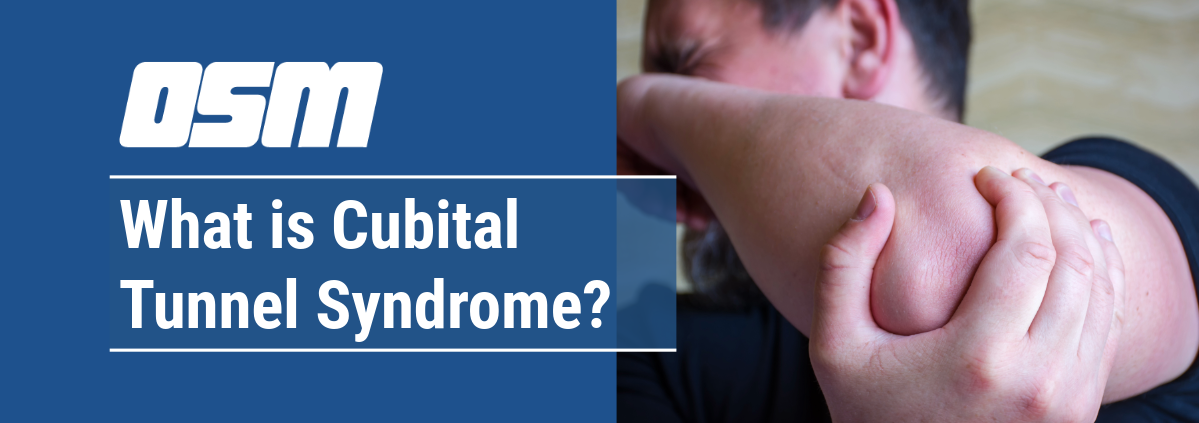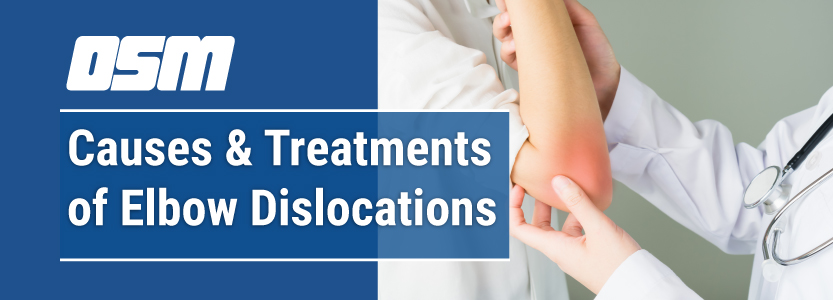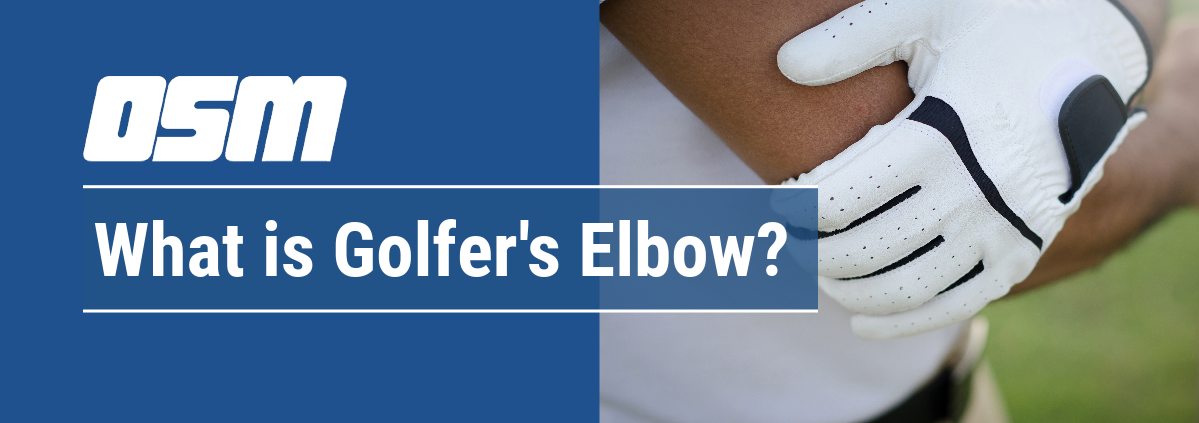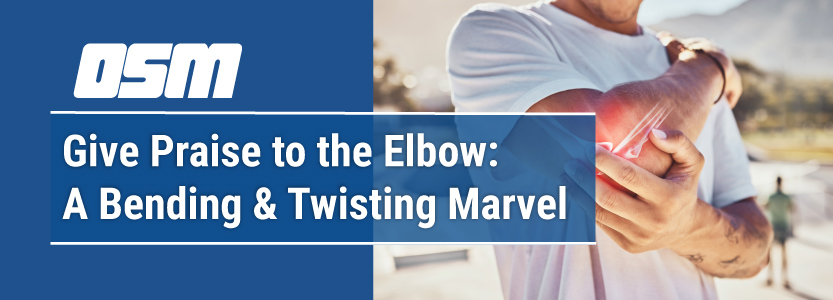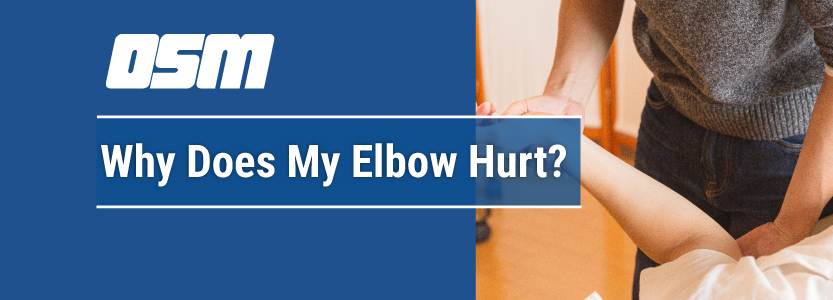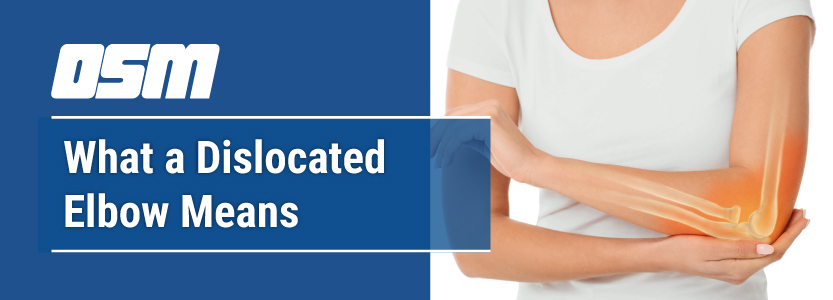Article featured on the Cleveland Clinic.
The elbow is composed of three bones. A dislocation happens when any of these bones become separated or knocked out of place. If you think you have dislocated your elbow, you should get immediate medical help.
What is a dislocated elbow?
A dislocated elbow occurs when any of the three bones in the elbow joint become separated or knocked out of their normal positions.
Dislocation can be very painful, causing the elbow to become unstable and sometimes unable to move. Dislocation damages the ligaments of the elbow and can also damage the surrounding muscles, nerves and tendons (tissues that connect the bones at a joint).
You should seek immediate medical treatment if you think you have an elbow dislocation. Treatment reduces the risk of irreversible damage.
How common is a dislocated elbow?
The incidence of the injury has been estimated at 2.9 events per 100,000 people over the age of 16. In children, dislocations can happen when someone yanks on the child’s arm.
SYMPTOMS AND CAUSES
What causes a dislocated elbow?
There can be various causes of a dislocated elbow.
- Most elbow dislocations occur when people try to stop a fall with their outstretched hand.
- Car accidents can cause dislocated elbows when people reach out to brace themselves against impact.
- Sports injuries can cause dislocations.
- Overuse can also be a cause.
- In some cases, a joint disorder such as Ehlers-Danlos syndrome causes dislocations. Ehlers-Danlos makes joints unusually loose and flexible.
What are the signs and symptoms of a dislocated elbow?
A dislocated elbow can be partial or complete. A complete elbow dislocation involves a total separation and is called a luxation. When the elbow joint is partially dislocated, it is called a subluxation.
Doctors also classify elbow dislocations according to the extent of the damage and where it occurs. The 3 types include:
- Simple: No major injury to the bone
- Complex: Severe injuries to the bone and ligament
- Severe: Damage to the nerves and blood vessels around the elbow
The signs and symptoms of a dislocated elbow vary depending on the severity of the injury and the bones involved. They include:
- Bruising
- Deformed-looking arm (bone looks out of place)
- Weakness in the joint
- Loss of ability to move the elbow
- Pain
- Swelling
DIAGNOSIS AND TESTS
How is dislocated elbow diagnosed?
A doctor diagnoses a dislocated elbow by looking at the arm and moving the joint.
In many cases, doctors use an imaging test called an X-ray to see if the bone is injured. Occasionally, doctors use tests called MRI or CT scans to look for damage to the surrounding muscles and tendons.
MANAGEMENT AND TREATMENT
How is a dislocated elbow condition managed or treated?
Some dislocated elbows return to their usual position on their own. More severe cases need a doctor to return the bones to their proper position.
Treatment for a dislocated elbow varies according to the severity of the injury. Steps you can take to reduce pain while you wait to see a doctor include:
- Rest
- Apply ice
- Keep the elbow elevated
Treatments for an elbow dislocation include:
- Manipulation: A doctor returns the bones to their normal positions, called a joint reduction.
- Medication: Your doctor may recommend over-the-counter medicine to reduce pain.
- Rest: Once the joint is back in place, you may need to keep it immobile and protect it. Using a sling can help the elbow joint heal.
- Physical therapy: You may need to do exercises to strengthen the muscles and tendons in the elbow to help support it after it heals.
- Surgery: You may need surgery if:
- Your doctor is unable to return the bones to their proper positions through manipulation.
- Dislocation damaged nerves or blood vessels in the elbow.
- Torn tendons or muscles need repair.
PREVENTION
Can dislocated elbow be prevented?
Caution can help reduce your risk of a dislocated elbow. Be careful on slippery surfaces and stairs to avoid falls. Avoid overtraining in sports to avoid overuse injuries.
What are the risk factors for dislocated elbow?
People at higher risk for a dislocated elbow include those who:
- Are over age 65 (because they are more prone to falls)
- Overtrain in sports, especially activities involving throwing
- Have inherited joint disorders such as Ehlers-Danlos syndrome
OUTLOOK/PROGNOSIS
What is the prognosis (outlook) for people with dislocated elbow?
Recovery times vary according to the severity of the elbow dislocation. Many dislocated elbows do not cause any further problems once they heal. They usually feel better as soon as a doctor puts the joint back in place.
LIVING WITH
When should I call the doctor?
Contact your doctor if you have the symptoms of a dislocated elbow. Do not try to push a dislocated elbow back into place yourself. This effort could damage the surrounding tissue and tendons and lead to complications. If you have a dislocated elbow, let your doctor know if you think you are not healing correctly or continue to have problems.
What questions should I ask my doctor?
If you have a dislocated elbow, you may want to ask your doctor:
- How serious is the dislocation?
- Will I need surgery or other treatment?
- What signs of complications should I look out for?
- Do I need a follow-up visit, and if so, when?
When can I go back to my regular activities?
Healing time for a dislocated elbow varies depending on the severity of the injury. Most people with a dislocated elbow can return to their usual activities once a doctor has returned the joint to its normal position.
A sling can help protect the elbow joint so you can return to your usual activities while the joint heals. Your doctor will let you know when you can resume more physical activities such as sports or lifting heavy objects.
The Orthopedic & Sports Medicine Center of Oregon is an award-winning, board-certified orthopedic group located in downtown Portland Oregon. We utilize both surgical and nonsurgical means to treat musculoskeletal trauma, spine diseases, sports injuries, degenerative diseases, infections, tumors and congenital disorders.
Our mission is to return our patients back to pain-free mobility and full strength as quickly and painlessly as possible using both surgical and non-surgical orthopedic procedures.
Our expert physicians provide leading-edge, comprehensive care in the diagnosis and treatment of orthopedic conditions, including total joint replacement and sports medicine. We apply the latest state-of-the-art techniques in order to return our patients to their active lifestyle.
If you’re looking for compassionate, expert orthopedic surgeons in Portland Oregon, contact OSM today.
Phone:
503-224-8399
Address
17355 Lower Boones Ferry Rd Suite 100A
Lake Oswego, OR 97035
Hours
Monday–Friday
8:00am – 4:30pm

